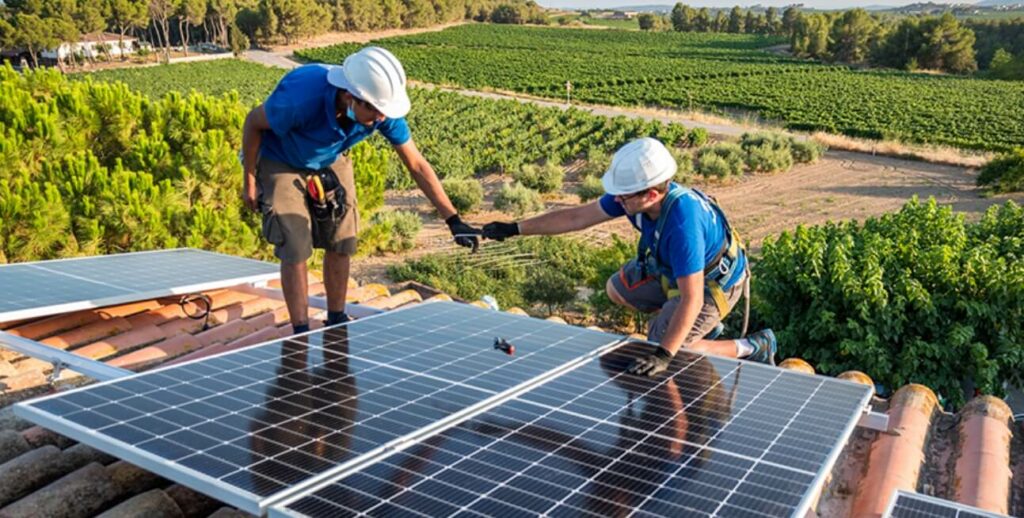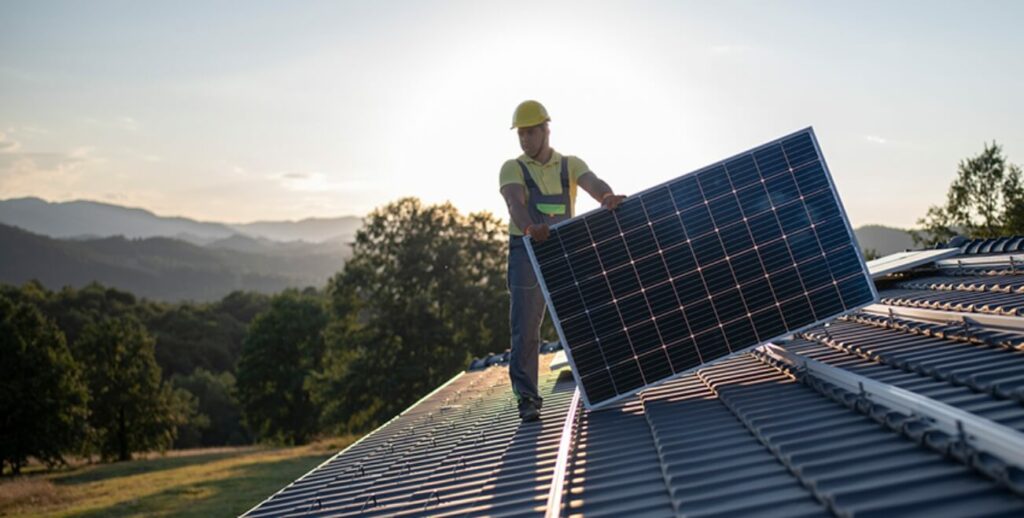A solar power plant is a facility designed to generate electricity by converting sunlight into electrical energy. This can be achieved through various technologies, with the most common being photovoltaic (PV) systems and concentrated solar power (CSP) systems. Solar power plants are used for residential, commercial, and utility-scale applications, contributing significantly to the generation of renewable energy and the reduction of greenhouse gas emissions.
Types of Solar Power Plants
- Photovoltaic (PV) Solar Power Plants:
- Use solar panels composed of photovoltaic cells to convert sunlight directly into electricity.
- Suitable for small-scale (residential) and large-scale (commercial, utility) applications.
- Concentrated Solar Power (CSP) Plants:
- Use mirrors or lenses to concentrate a large area of sunlight onto a small area.
- The concentrated light is converted to heat, which is then used to produce electricity through a steam turbine.
- Typically used for utility-scale power generation.
Components of a Photovoltaic (PV) Solar Power Plant

- Solar Panels (Photovoltaic Modules):
- Convert sunlight into direct current (DC) electricity.
- Types include monocrystalline, polycrystalline, and thin-film.
- Inverters:
- Convert the DC electricity generated by the solar panels into alternating current (AC) electricity, which is used in homes and businesses.
- Types include string inverters, microinverters, and central inverters.
- Mounting Structures:
- Support and orient the solar panels to maximize sunlight exposure.
- Can be ground-mounted or roof-mounted.
- Wiring and Electrical Components:
- Connect solar panels to inverters and to the electrical grid or battery storage systems.
- Include cabling, connectors, and switchgear.
- Monitoring and Control Systems:
- Track the performance of the solar power plant and ensure efficient operation.
- Include sensors, data loggers, and software for remote monitoring.
- Battery Storage (Optional):
- Stores excess electricity generated during the day for use during periods of low sunlight or high demand.
- Types include lead-acid and lithium-ion batteries.
Components of a Concentrated Solar Power (CSP) Plant
- Solar Collectors:
- Mirrors or lenses that concentrate sunlight onto a receiver.
- Types include parabolic troughs, solar power towers, and dish Stirling systems.
- Receiver:
- Absorbs the concentrated sunlight and converts it into heat.
- Typically contains a heat-transfer fluid (e.g., molten salt, oil).
- Heat Exchanger:
- Transfers heat from the receiver to a working fluid, usually water, to generate steam.
- Steam Turbine:
- Converts the thermal energy of steam into mechanical energy, which is then converted into electricity by a generator.
- Thermal Storage (Optional):
- Stores excess thermal energy for use during periods of low sunlight or high demand.
- Allows for continuous power generation.
- Cooling System:
- Dissipates excess heat and improves the efficiency of the power plant.
- Can be air-cooled or water-cooled.
Advantages of Solar Power Plants
- Renewable Energy Source:
- Solar energy is abundant and inexhaustible.
- Reduces reliance on fossil fuels and decreases greenhouse gas emissions.
- Low Operating Costs:
- After initial installation, solar power plants have low operating and maintenance costs.
- Scalability:
- Solar power plants can be scaled from small residential systems to large utility-scale installations.
- Energy Independence:
- Reduces dependence on imported fuels and enhances energy security.
- Environmental Benefits:
- Produces clean energy with minimal environmental impact compared to conventional power generation.

Considerations
- Initial Investment:
- High upfront costs for purchasing and installing solar panels and associated equipment.
- Financial incentives, rebates, and declining costs of solar technology can help offset initial expenses.
- Intermittency:
- Solar power generation is dependent on sunlight, which can be variable due to weather and time of day.
- Energy storage systems or hybrid systems (combined with other power sources) can mitigate this issue.
- Land Use:
- Large-scale solar power plants require significant land area.
- Dual-use strategies, such as agrivoltaics (combining agriculture and solar power), can optimize land use.
Steps to Implement a Solar Power Plant
- Site Assessment:
- Evaluate the site for solar potential, shading, land availability, and environmental impact.
- Feasibility Study:
- Conduct technical and economic analyses to determine project viability.
- Consider factors such as energy yield, costs, financing options, and regulatory requirements.
- System Design:
- Design the solar power plant based on energy needs, site conditions, and budget.
- Select appropriate components (panels, inverters, mounting structures).
- Permitting and Approvals:
- Obtain necessary permits and approvals from local authorities and utility companies.
- Installation:
- Install solar panels, inverters, mounting structures, and electrical components.
- Ensure proper wiring, grounding, and safety measures.
- Commissioning and Monitoring:
- Test and commission the system to ensure proper operation.
- Implement monitoring systems to track performance and maintenance needs.
By investing in solar power plants, individuals, businesses, and governments can contribute to a more sustainable and resilient energy future, while also enjoying the economic and environmental benefits of renewable energy.











Ein WordPress-Kommentator
October 12, 2022Hallo, dies ist ein Kommentar.
Um mit dem Freischalten, Bearbeiten und Löschen von Kommentaren zu beginnen, besuche bitte die Kommentare-Ansicht im Dashboard.
Die Avatare der Kommentatoren kommen von Gravatar.